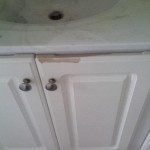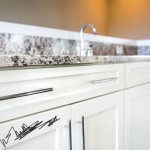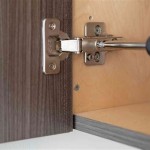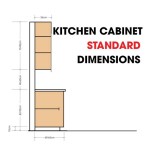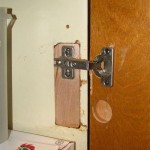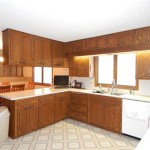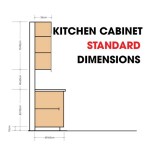Towel Rail Kitchen Cupboard: A Comprehensive Guide
The convergence of functionality and space optimization often leads to innovative solutions in kitchen design. The towel rail kitchen cupboard represents one such solution, integrating the utilitarian need for towel storage with the aesthetic and organizational benefits of a standard kitchen cupboard. This article will delve into the multifaceted aspects of this design element, exploring its types, advantages, installation considerations, and potential drawbacks, ultimately providing a comprehensive understanding of the towel rail kitchen cupboard.
The primary purpose of a towel rail kitchen cupboard is to provide a designated space for storing and drying kitchen towels. Traditional methods often involve draping towels over oven handles, countertops, or precarious hooks, which can detract from the overall appearance of the kitchen and pose hygiene concerns. The towel rail cupboard elegantly addresses these issues by concealing towels within a cabinet while simultaneously facilitating air circulation for drying. It also helps in decluttering the kitchen space and creating a more organized and visually appealing environment.
Types of Towel Rail Kitchen Cupboards
The design and functionality of towel rail kitchen cupboards can vary considerably, offering a range of options to suit different kitchen layouts, aesthetic preferences, and storage requirements. Broadly, these cupboards can be categorized based on their construction, location, and the type of towel rail mechanism employed.
One common type is the integrated towel rail cupboard. This involves a standard kitchen cupboard modified to incorporate a towel rail, typically made of stainless steel or chrome. The rail is often mounted on the inside of the cupboard door, allowing the towel to hang freely when the door is closed. In other designs, the rail may be fixed within the cupboard interior, requiring partial or full opening of the door to access the towel. These integrated units are versatile and can be incorporated into existing kitchen cabinetry with relative ease, provided that sufficient internal space is available.
Another type is the pull-out towel rail cupboard. This design features a dedicated pull-out mechanism that slides in and out of the cupboard. The towel rail is attached to this pull-out frame, allowing for convenient access and improved air circulation. This type is particularly useful in narrow spaces or where easy access is paramount. The pull-out mechanism can also be designed to accommodate multiple towel rails, maximizing storage capacity.
Corner towel rail cupboards are designed specifically for corner locations in the kitchen. These cupboards typically have a triangular or L-shaped configuration and incorporate a towel rail within their structure. Due to the challenging geometry of corner spaces, these cupboards often require careful planning and installation to ensure optimal functionality and accessibility. The towel rail can be positioned either on the door or within the internal space, depending on the overall design and available room.
Finally, open towel rail cupboards offer a more minimalist approach. These designs consist of a cabinet frame with an exposed towel rail, allowing the towel to be visible at all times. This approach is often favored for its simplicity and ease of access, but it may not be suitable for individuals who prefer a more concealed storage solution.
Advantages of Using a Towel Rail Kitchen Cupboard
The incorporation of a towel rail kitchen cupboard offers several advantages, contributing to a more organized, hygienic, and aesthetically pleasing kitchen environment. These advantages extend beyond simple towel storage, impacting overall kitchen functionality and design.
Space optimization is a key benefit. By integrating towel storage within a cupboard, the towel rail kitchen cupboard eliminates the need for separate towel racks or hooks, freeing up valuable wall and countertop space. This is particularly beneficial in smaller kitchens where space is at a premium. The cupboard itself can also be used to store other kitchen essentials, such as cleaning supplies, dishcloths, or small appliances, further maximizing storage capacity.
Improved hygiene is another significant advantage. Storing towels within a cupboard helps to protect them from dust, grease, and other contaminants that may be present in the kitchen environment. The enclosed space also provides a more controlled environment for drying, reducing the risk of mildew and unpleasant odors. The pull-out and open designs, in particular, promote air circulation, further enhancing drying efficiency and hygiene.
Aesthetically, the towel rail kitchen cupboard contributes to a cleaner and more organized visual appearance. By concealing towels within a cabinet, it eliminates the clutter associated with exposed towels, creating a more streamlined and visually appealing kitchen. The design of the cupboard can also be customized to match the existing kitchen décor, ensuring a cohesive and harmonious aesthetic.
Convenience and accessibility are also enhanced. The towel rail kitchen cupboard provides a designated and easily accessible location for towels, eliminating the need to search for them when needed. The pull-out designs, in particular, offer exceptional convenience, allowing users to retrieve towels with minimal effort. This improved accessibility can streamline kitchen tasks and enhance overall efficiency.
Installation Considerations and Potential Drawbacks
While towel rail kitchen cupboards offer numerous benefits, careful consideration must be given to installation requirements and potential drawbacks to ensure optimal performance and satisfaction. Factors such as cupboard size, location, ventilation, and potential moisture issues should be carefully evaluated.
Installation typically involves integrating the towel rail cupboard into the existing kitchen cabinetry. This may require modifications to existing cupboards or the installation of new cabinets altogether. In either case, careful measurements and planning are essential to ensure a proper fit and seamless integration. The weight-bearing capacity of the cupboard and its supporting structure should also be considered, especially when dealing with heavier towels or multiple rails. Professional installation is often recommended, particularly for complex designs or when modifications to existing cabinetry are required.
Ventilation is a crucial consideration to prevent moisture buildup and mildew growth within the cupboard. Adequate air circulation is essential for drying towels effectively and maintaining a hygienic environment. Cupboards with poor ventilation may require the installation of ventilation holes or the use of moisture-absorbing materials to mitigate these issues. Pull-out and open designs generally offer better ventilation than fully enclosed units. The location of the cupboard can also impact ventilation; avoid placing it in areas with high humidity or poor airflow.
Moisture management is another important factor. Kitchens are inherently prone to moisture, and a towel rail cupboard can exacerbate this issue if not properly managed. Wet towels can contribute to moisture buildup within the cupboard, creating a breeding ground for mold and mildew. To minimize this risk, ensure that towels are wrung out thoroughly before being placed in the cupboard and that the cupboard is regularly cleaned and dried. The use of moisture-resistant materials in the construction of the cupboard can also help to prevent moisture damage.
Space constraints can also present a challenge. Towel rail kitchen cupboards require adequate space, both internally and externally, to function effectively. In smaller kitchens, the addition of a towel rail cupboard may compromise valuable storage space or create a cramped environment. Careful planning and consideration of alternative storage solutions may be necessary in such cases. The size and configuration of the cupboard should be carefully chosen to maximize storage capacity while minimizing space intrusion.
Finally, the cost of a towel rail kitchen cupboard can be a factor for some individuals. Custom-built or high-end models can be relatively expensive, especially when professional installation is required. However, more affordable options are also available, such as DIY kits or pre-fabricated units. Weighing the cost against the benefits and considering alternative storage solutions can help to determine the most appropriate option for individual needs and budgets.

Over Cabinet Cupboard Kitchen Towel Rail Holder Rack Extendable Bar S

Teabelle Over Door Tea Towel Rack Bar Hanging Holder Rail Organizer Bathroom Kitchen Cabinet Cupboard Hanger Shelf Lazada Singapore

150mm Pull Out Kitchen Towel Rail Bottle Rack Wwtr150
1pc Stainless Steel Towel Rack Storage Punch Free Cabinet Door Back Rag Bathroom Holder Accessories L

Protect Towel Rail Holder Hanger Bathroom Cupboard Kitchen Hook Over Door

Giamo Pull Out Tea Towel Rails For Quick Easy Access Fit
1 3 5 Pcs Plastic Hanging Holder Towel Rack Multifunction Cupboard Cabinet Door Back Kitchen Accessories Home Storage Organizer Ee Singapore

Pull Out Towel Rack Richelieu Hardware

Casewin 1 Pcs Kitchen Towel Holder Over Cabinet Bar Rack The Door For Universal Fit On Inside Or Outside Of Cupboard

Vehhe Over The Door Towel Rail Convenient Kitchen
Related Posts

